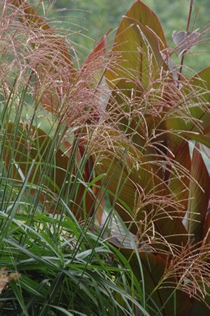Garden Pests and Diseases
Tracy provides solutions regarding pest problems, insects, identification of healthy and ailing plants, chemical pesticides, and critter control.
Pests, Weeds & Plant Disease: Garden Pests And Diseases
Best-selling author – Professional speaker – Horticulturist – Designer – TriathletePosts RSS Comments RSS
Tracy provides solutions regarding pest problems, insects, identification of healthy and ailing plants, chemical pesticides, and critter control.
Pests, Weeds & Plant Disease: Garden Pests And Diseases
Learn how to effectively paint your garden in plants, the second of our two-part series of using color in the garden.
Click here to view the article (~15mb pdf)
Tracy’s back with more advice on: What is garden ‘staking’? | What is ‘pea staking’? | When is the best time to stake my flowering plants? | What should I use to stake my plants? | How do I stake a plant with a single upright stem? | How do I stake full bushy plants? | How do I stake perennials that have fallen?
Gardening Basics: Garden Staking
Learn how to effectively paint your garden in plants, the first of our two-part series of using color in the garden.
Click here to view the article (~15mb pdf)
Tracy DiSabato–Aust (Garden Designer and Author) gives expert video advice on: What is ‘pruning’? | What variables are involved in pruning? | How much pruning does a plant need? and more…
 The exciting process of mixing and matching an endless variety of colors can become overwhelming. One way to simplify the design process is to reduce the number of variables. I’ve found that using a limited color palette, even a monochromatic scheme, is an effective and rewarding way to design combinations.
The exciting process of mixing and matching an endless variety of colors can become overwhelming. One way to simplify the design process is to reduce the number of variables. I’ve found that using a limited color palette, even a monochromatic scheme, is an effective and rewarding way to design combinations.
You can read the complete article at this link:
Planting with a Limited Color Palette
(765kb, PDF)
Reprinted with permission from Fine Gardening Magazine.
This video covers the following subjects:
 In a well-designed border, we often notice the beauty of the combinations of plants more than the individual plants themselves. To achieve this sense of interplay, it’s useful to think about visual texture: the patterns created by the lines and forms of combined leaves, branches, and flowers. Instead of using threads or yarns to weave texture, gardeners can stitch together the varied patterns of plants to create living tapestries. This can be accomplished in a number of ways.
In a well-designed border, we often notice the beauty of the combinations of plants more than the individual plants themselves. To achieve this sense of interplay, it’s useful to think about visual texture: the patterns created by the lines and forms of combined leaves, branches, and flowers. Instead of using threads or yarns to weave texture, gardeners can stitch together the varied patterns of plants to create living tapestries. This can be accomplished in a number of ways.
You can read the complete article at this link:
Designing for Visual Texture
(1.45mb, PDF)
Reprinted with permission from Fine Gardening Magazine.
Recently, I had the chance to appear on the #1 gardening show in the Northwest, “Garden Time” while in Portland, Oregon. Our topic was my most recent book.